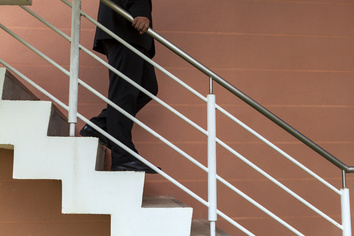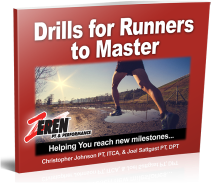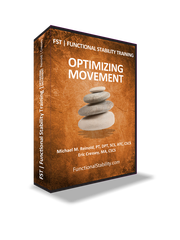|
If there is one assessment that I perform in working with injured runners beyond watching them run, it is undoubtedly the lateral step down (LSD). The LSD is a simple, efficient, moderately reliable, and relevant assessment that yields a wealth of information when considering the performance demands of running. It tells you close to everything a clinician needs to know with the exception of a runner’s tolerance to hopping, cadence, and breathing strategy. Since a good portion of running related injuries (RRIs) tend to occur during the stance phase of running, the LSD gives clinicians, coaches, and trainers with a window into any potential impairments that may negatively impact one’s running while possibly putting them at risk of injury. Before conducting an LSD assessment of an injured runner, however, it is important to first understand that during the running gait cycle that knee absorption during the stance phase is upwards of 45 degrees of knee flexion. The examiner should therefore set the height of the step to ensure the performer cycles through the 0-45 degree range of knee flexion. Additionally, the performer should also be barefoot to eliminate the potential influence of footwear as a shoe with a heel to toe differential may disguise any dorsiflexion limitation (apologies for demonstrating with shoes in the vid below). From there, I typically demonstrate the movement to provide the runner with a model of performance before having them practice a couple times to get acquainted with the movement. Special attention should be paid to ensure that the foot of the stance leg is straight and at the edge of the platform while the great toe is pointed towards noon on an imaginary clock. The non-stance leg should be held in full knee extension while maintaining the foot in a level position. The hands should also be positioned on the pelvis to ensure that they do not augment the performer’s balance. I typically perform 5 repetitions per side. Prerequisites 1. Clear understanding of how to perform the test 2. Completion of the LSD on the non-involved extremity 3. Ability to fully weight bear through the affected extremity Equipment 1. Stepper or platform with adjustability 2. Level surface/ground for the platform for rest on Information that We Obtain from the LSD Assessment 1. Toe dexterity 2. Single leg postural stability 3. Ability to progress the leg over the foot (ankle dorsiflexion) 4. Tolerance to eccentric and concentric closed chain contractions 5. Adequate hip and lumbopelvic neuromuscular control? 6. Breathing strategy Possible Compensatory Strategies to Monitor 1. Excessive subtalar pronation 2. Dynamic knee valgus 3. Femoral internal rotation 4. Hip adduction/contralateral pelvic drop 5. Excessive hip flexion
0 Comments
Leave a Reply. |
OUR LATEST
E-BOOK for RUNNERS MIKE REINOLD & ERIC CRESSEY'S FUNCTIONAL STABILITY PART 4
Archives
January 2018
Categories
All
|




 RSS Feed
RSS Feed